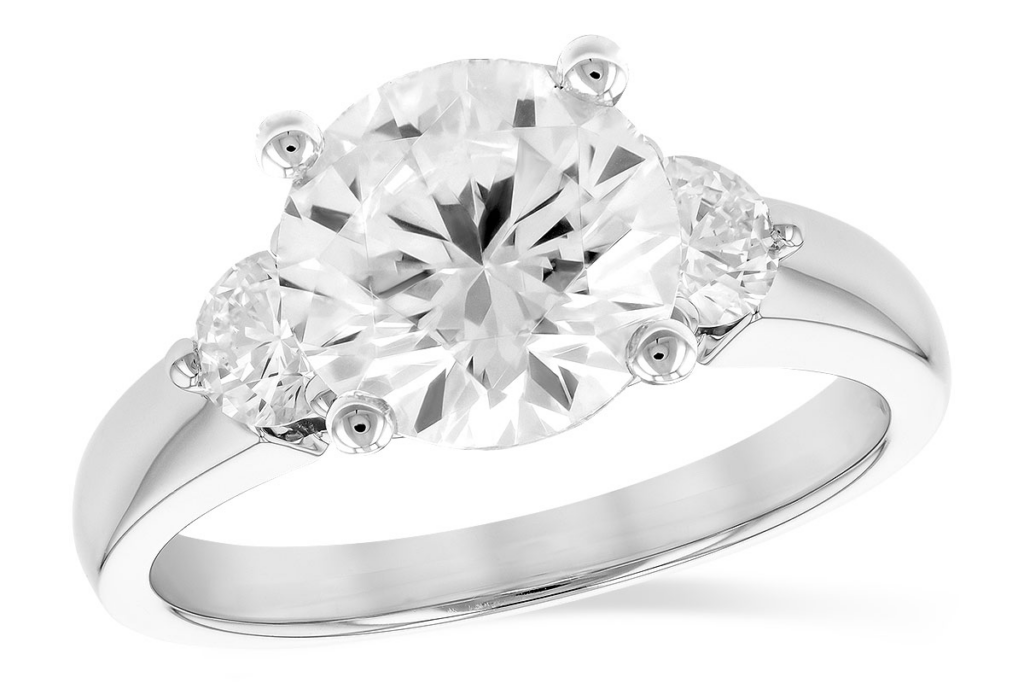The formation of diamonds is one of the things you may find yourself curious about. Knowing this type of information will make you appreciate this popular gemstone even better.
Therefore, nurture your current diamond know-how with the information you find in this whole article.
Naturally-made Diamonds
Natural diamonds have been around for 3.5 billion years while the younger stones have been around for 1 billion years. With this, its existence is way before the era of dinosaurs.
Beneath the Earth’s Surface
Deep below the surface of the Earth is where the natural diamonds are formed. The environment has an extreme pressure of above 45 kbar and temperature up to 1300°C.
The diamond is pushed to the surface that is triggered by volcanic eruptions from the earth’s mantle. The kimberlite pipes on the surface from a cooled magma is a significant source of the diamond but may also not contain one.
Thus, you can clearly say these gems are rare.
Also, plate tectonic movements may crystallize tiny diamonds from subduction zones.
Meteorites
You can also call the diamonds coming from the meteorites extraterrestrial. Nanodiamonds are made from meteorites through asteroid impacts to the earth or other parts of space.
Lab-Grown Diamonds Processes

Natural and lab-grown diamonds are composed of 100% Carbon. Because of the physical and chemical similarity, an untrained eye can hardly tell the difference. However, experts can almost spot the difference immediately.
There has been a rise in popularity for lab-grown diamonds since you get almost the same as the mined ones only that it is affordable.
High Pressure-High Temperature (HPHT)
HPHT is a process of subjecting the material to high pressure (about 70,000 atm) and high temperature (about 3,700°F). This is the needed environment to allow the diamond to grow into a “mature” state.
In this case, the machine produces these gems under high pressure and temperature as well coming from a small diamond seed.
Chemical Vapor Deposition (CVD)
In contrary to the HPHT method, CVD-produced diamonds use low pressure. The chamber has the diamond seed inside. Then, the injection of hydrogen-rich or methane-rich gas mixture follows.
The carbon build-up forms the atomic bond and creates a larger diamond.
Pure crystalline Carbon composes the diamonds from the CVD process. And so, it is comparable to mined gems like the HPHT method.
Though lab-grown diamond is man-made, here are some of the benefits.
- Cost-Effective. Lab-grown has 30% lesser cost compared to the naturally-made
- Eco-friendly. Machines produce sustainable gems due to less environmental damage from the mining process
- Comparatively High-quality. Its similarity to mined diamonds is almost flawless.
Are Lab-Grown Diamonds considered as Real Diamonds?
The answer is yes. Lab-grown or Lab-created diamonds are real diamonds because they have the same chemical composition. Both are also graded using the 4 C’s criteria. The only difference is the price point. Lab-grown diamonds are more affordable than mined diamonds.
Will Lab Diamonds Pass Diamond Testers?
Lab diamonds also pass diamond testers because they are made of the same chemical composition, thus the heat that passes through the lab-created diamond is the same as that of mined diamonds. Note that Diamond testers measure the amount of heat that moves through the stone. This means that Mined Diamond, Lab-Grown Diamond, and Moissanite will pass diamond testers because they register the same heat movement.
Purchase your Valuable Diamonds
Learning how a diamond is made may satisfy the slogan, “Diamonds are Forever” If you are more convinced to get jewelry, look for a reliable store for less hassle and no regrets.
You can check other important information to know what piece you fancy. If in doubt, you can always contact or request an appointment to talk to experts for any inquiry.
Moreover, you should be clever to know a diamond’s worth whether you are choosing an engagement ring, your jewelry, or as a gift.



